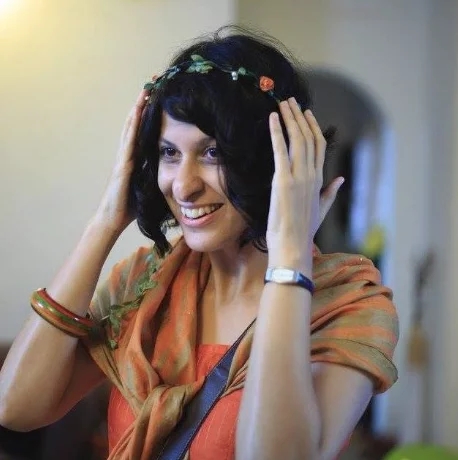“Coonoor is 6000 feet above sea level, with a population of 5,000 of whom 2,000 are Europeans…There are about twenty miles of excellent and beautiful pleasure drives, the hedges of which are bright with roses, fuchsias, dahlias, heliotropes, lantanas, sunflowers, passion flowers and many others.
It is a lovely spot, every turn of the roads opening some fresh view of noble mountains, steep precipices, sweeps of forest, and the rich fertile plains beyond.”
Picturesque India: A Handbook for European Travellers
Picturesque India: A Handbook for European Travellers

For the colonial British, the delicate crispness of Coonoor’s air is the perfect escape from the strangling heat of the Madras summer. Their tiny settler community (only 36 European houses in 1863, according to the Bombay Gazette) swells and distends until it sweeps away the homes of Coonoor’s Indian dwellers, planting smug British cottages in their stead. Fuchsia, heliotrope, geranium, mimosa and roses are forced onto the local vegetation. By 1843, radish, cabbage, savoys, kale, asparagus, new potatoes, carrots, cauliflower, beetroot, lettuce, turnips, plums, raspberries, strawberries, blackberries, gooseberries, plums, peaches, limes and oranges honeycomb the town greens. The British take to calling it a ‘hill station’, a somewhat slighting reference to the stately Nilgiri ranges.
Lush indigenous forests are soon dimmed into coffee and tea plantations. “Tea is hideous,” grumbles the intrepid traveller – writer Maud Power in her 1907 book Wayside India, “The side of the mountain on which it grows is shaved bare of vegetation, while the ugly little pruned green bushes stand in rows like cabbages.” Notwithstanding its lack of visual appeal, estates like Glendale would do much to brick up India’s tea culture.

Meher Mirza
Meher is an internationally-published food, travel, and culture writer based in Mumbai, India. Formerly the Chief Copy and Features Editor at BBC Good Food India and a food columnist for NDTV, she has contributed to BBC Travel, BBC Culture, CNN Travel, The Guardian, Saveur, Literary Hub, Condé Nast Traveller India, Food 52, Serious Eats, Roads & Kingdoms, and other publications. Her work has also been featured in anthologies by Lonely Planet and Fodor’s. She has participated in panel discussions, including AVID Learning’s Multipolis Mumbai: Women Writers and the City and Paper Planes. Additionally, she has been a guest on the IVM Podcast Not Just Dhansak With Bawi Bride. Meher's focus is on exploring the anthropology of Indian food and culture through a postcolonial lens, with a particular interest in her community, the Parsis. Write to her at meher.mirza@gmail.com.

AJ Mallari
AJ Mallari straddles the confluence of product, space, and systems design as a consultant focusing on holistically outfitting design-led initiatives with heavy leanings on craft and artisanal production to reach their creative goals. He has worked across South and Southeast Asia facilitating workshops, teaching, conducting research, and managing creative interventions while ticking off a shortening list of must-see places. He recently moved to the Visayan Islands after finishing further studies in Belgium last year, he currently runs a start-up creative practice while teaching design at the local university.
Comments (0)

